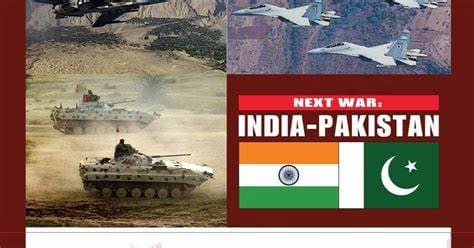
The aftermath of the recent alleged aerial engagements between India and Pakistan was initially clouded by conflicting claims. Pakistan asserted the downing of advanced Indian fighter jets, including the Rafale and Sukhoi, a narrative echoed by some foreign media citing anonymous sources. However, India’s cautious response, reassuring about the safety of its pilots without confirming any aircraft losses, hinted at a different reality. Now, a strategy previously confined to speculation has seemingly been confirmed: India deployed decoy dummy aircraft, meticulously designed to mimic its formidable fleet, a fact reported by the Times of India. Could it be that Pakistan’s claims of shooting down advanced jets are based on these unmanned decoys, while the actual Indian warplanes executed a more strategic mission?
The use of decoys in warfare is a well-established tactic, and in modern aerial combat, realistic aerial decoys present a sophisticated form of deception. The Times of India’s report now lends credence to the theory that India strategically deployed unmanned aerial vehicles (UAVs) engineered to replicate the radar signatures and flight profiles of high-value assets like the Rafale and Sukhoi. These “phantom” jets would have been programmed to fly in a manner that would naturally trigger an adversary’s air defense systems.
As expected, Pakistan’s radars likely lit up, detecting what their operators believed to be incoming Indian fighter jets. Consequently, their air defense batteries would have engaged these perceived threats, locking on and potentially firing upon the decoy aircraft. This very act of engagement would have yielded a critical advantage to India: the exposure of Pakistan’s air defense network. The locations of their radar sites, missile batteries, and command-and-control centers would have been revealed, providing invaluable intelligence.
India’s initial cryptic statement during the press conference, emphasizing the safety of all pilots, now makes perfect sense in this context. If only unmanned decoys were engaged and “shot down,” then indeed, all pilots would be safe and accounted for. This carefully crafted statement would serve to maintain operational security while subtly indicating that the situation was not as Pakistan portrayed it.
Furthermore, the subsequent reports of India successfully hitting targets deep inside Pakistan gain significant clarity with the confirmation of the decoy deployment. With Pakistan’s air defenses activated and potentially distracted by the dummy aircraft, the Indian Air Force would have had a window of opportunity to launch a targeted counteroffensive. Their actual fighter jets could have then penetrated the now-exposed airspace to strike their intended targets with a reduced threat.
The strategic benefits of such a calculated move are substantial. Firstly, India could probe Pakistan’s air defense capabilities and gather crucial intelligence in real-time without risking its pilots or frontline fighter aircraft. Secondly, the engagement of decoys could have depleted Pakistan’s valuable missile resources. Thirdly, and perhaps most importantly, it created the necessary conditions to degrade the enemy’s air defense network, facilitating a successful strike operation.
The confirmation from a credible source like the Times of India transforms this from mere speculation into a likely reality. It highlights the sophisticated and nuanced strategies employed in modern aerial warfare, where deception plays a pivotal role. Pakistan’s claims of downing advanced Indian jets may very well be based on engagements with these strategically deployed decoys.
This incident provides a compelling example of manipulating information and misinformation amidst conflict. While initial reports might have painted one picture, the emerging reality, supported by credible reporting, suggests a far more intricate and strategically advantageous operation by India. The successful deployment of decoy aircraft illustrates the value of technological innovation and tactical thinking in achieving military objectives, potentially turning a defensive posture into a decisive offensive maneuver. The phantom threat, now seemingly confirmed, appears to have played a crucial role in India’s strategic success.
You can read some of my articles here – https://bnacharya.com/is-a-casteless-society-possible-in-india/
https://bnacharya.com/author/biranchi-narayan-acharya/: The Phantom Threat Realized: India’s decoy aircraft strategy Against Pakistan?